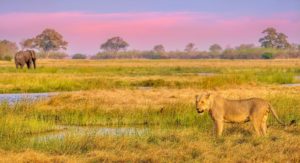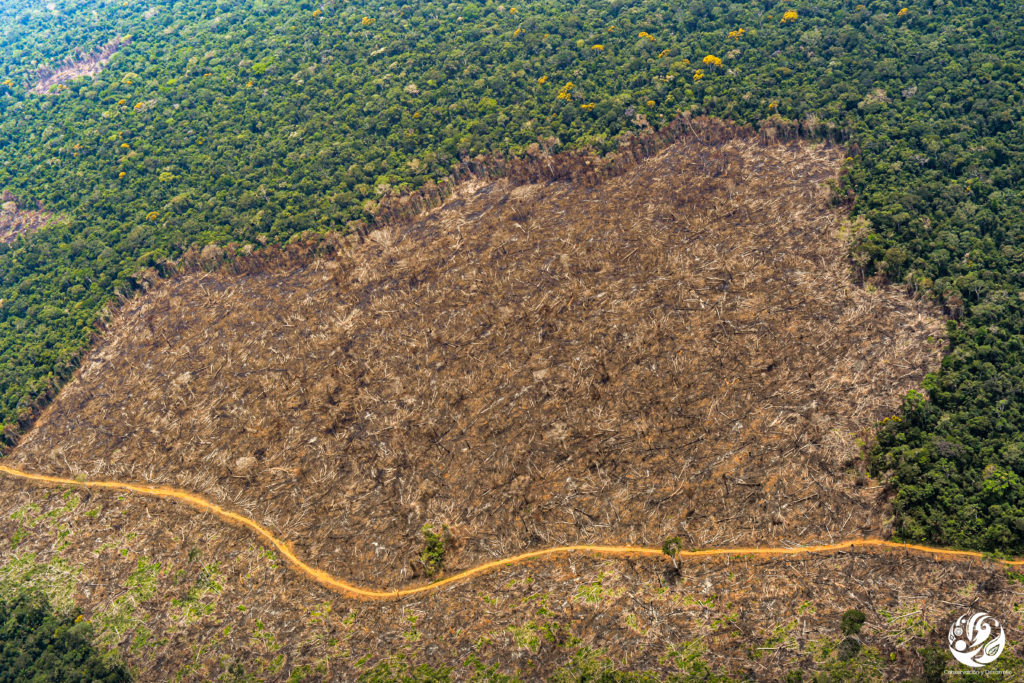Imagine a young male jaguar in the tropical Central American forests looking for a mate. In theory, he could roam from Mexico to Argentina, ensuring that the genetic pool is mixed for a good continuation of the species. In practice, he would have to go through rivers and mountains, but also human-made obstacles such as roads, cities, agricultural fields and other open areas that hinder travel.
All around the world, ecosystem fragmentation caused by human activity continues to disrupt habitats, threatening biodiversity and impeding climate change adaptation. While Protected Areas are the foundation of nature conservation by preserving ecosystems, retaining ecological connectivity is essential and more so in a time of climate change. In response, more and more projects are seeking to better conserve ecological connectivity, i.e. the unimpeded movement of species and the flow of natural processes that sustain life on Earth—including critical linkages between natural areas—that can support wildlife movement, gene flow, free flowing rivers, and other natural processes essential to healthy landscapes.
Both the Amazon Sustainable Landscapes Program (ASL) and the Global Wildlife Program (GWP), funded by the Global Environment Facility (GEF) and led by the World Bank, support national efforts by participating in projects to improve landscape connectivity in their regions, and responding to their needs for guidance, tools, and best practices to ensure efficient and successful results.

On-the-ground efforts to improve connectivity and establish or maintain corridors take many forms. For example, an ASL national project in the Colombian Amazon is working with communities and institutions to promote low-carbon development and forest connectivity to enhance resilience of people and wildlife to climate change. Another ASL project in Ecuador is improving ecological connectivity by establishing two ecological corridors and associated management mechanisms to ensure the conservation of biodiversity and surrounding ecosystems over the long-term.
In Botswana, a GWP project is promoting integrated landscape approaches for improving drylands ecosystem resilience, and reducing human-wildlife conflict through recognition and management of ecological corridors for migratory animals such as elephants. And a GWP project in Indonesia is strengthening management of multi-use landscapes for community livelihoods and the conservation of globally threatened species, including designing ecological corridors between existing protected and conserved areas for the daily and seasonal movements of individual and groups of species.
Starting in April 2022, ASL and GWP commissioned a series of workshops to promote the exchange of knowledge among their national projects and the use of the latest knowledge about connectivity and corridors. Dr. Annika Keeley from the Center for Large Landscape Conservation (CLLC) and Diego Juffe Bignoli, Biodiversity Conservation Expert, brought their expertise to lead the sessions. The “Corridor and Connectivity Training and Capacity Building Initiative” workshop series brings together project teams from 40+ countries to understand successful interventions and share common challenges on planning for and managing corridors. With this training the ASL and GWP take an ambitious approach to bringing stakeholders from three continents together to accelerate local and regional solutions for conserving biodiversity, preserving landscapes, and achieving inclusive development.
An introductory meeting was held virtually on April 28, to kick off the workshop series. With nearly 100 participants representing many of the 47 national projects, the group was introduced to key concepts in connectivity conservation. This workshop included an interactive, brainstorming session where GWP and ASL national projects met their peers and shared their challenges and experiences.
The training and capacity building activity included a two-day workshop held during the summer of 2022 under the title “Planning for Connectivity Conservation.” Approximately 60 participants came together with speakers from the Center’s staff and members of the IUCN WCPA Connectivity Conservation Specialist Group. With hands-on training and featured presentations by ASL and GWP project teams from Bhutan, Botswana, Colombia, and Ecuador, the workshop covered priority topics such as corridor planning experiences, spatial planning for mapping current and potential movement corridors, and governance for connectivity. Conservation scientist Dr. Amrita Neelakantan, a consultant with the Center for Large Landscape Conservation, and Lucy Waruingi, executive director of the African Conservation Center, shared their experience from India and Africa on governance in connectivity. They provided valuable insights into the importance of inclusive stakeholder engagement to ensure effective and enduring connectivity conservation.
After this key event focused on planning, the team prepared two more events on managing and monitoring connectivity and participation in connectivity conservation. Read the Guidance Note that resulted from the workshops: Lessons learned in planning and implementing corridors and connectivity conservation. It is now available in English and Spanish!
More Information:
Amazon Sustainable Landscapes Program
View the recording of the Planning for Corridors and Connectivity workshop
Photo, top: Tropical ecosystems are losing their connectivity values as they are transformed by land clearing to make way for oil plantations. Photo credit: Rodrigo Botero/FCDS.
A version of this article also appears on the website of The World Bank.



